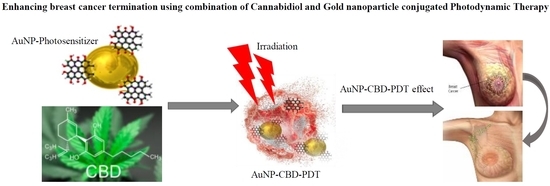 “Ovarian cancer, with over a 90% reoccurrence within 18 months of treatment, and approximately a 30% mortality rate after 5 years, is the leading cause of death in cases of gynaecological malignancies. Acquired resistance, and toxic side effects by clinically used agents are major challenges associated with current treatments, indicating the need for new approaches in ovarian cancer treatment.
“Ovarian cancer, with over a 90% reoccurrence within 18 months of treatment, and approximately a 30% mortality rate after 5 years, is the leading cause of death in cases of gynaecological malignancies. Acquired resistance, and toxic side effects by clinically used agents are major challenges associated with current treatments, indicating the need for new approaches in ovarian cancer treatment.
Increased tumour cell proliferation associated with upregulation of cannabinoid (CB) receptors has been observed in ovarian cancer. As cannabinoids reported to bind to CB receptors, and can potentially modulate their downstream signalling, this raises the possibility of cannabinoids as potential anticancer drugs for ovarian cancer treatment.
Amongst the cannabinoids, non-psychoactive CBD and CBG have been shown to have anticancer activities towards prostate and colon cancer cells through multiple mechanisms of action. However, CBD and CBG have yet to be investigated in relation to ovarian cancer therapy either in vitro or in vivo.
Aim:
The aims of this study were to evaluate the potential cytotoxic effects of CBD and CBG in human ovarian cancer cells, their ability to potentiate existing clinically used agents for ovarian cancer, and to perform initial mode of action studies in vitro.
Conclusions:
Both CBD and CBG showed preferential cytotoxicity against the ovarian cancer cells analysed compared to the non-cancer cells; however, this was less than for carboplatin. Importantly, in contrast to carboplatin, CBD and CBG showed similar activity towards cisplatin sensitive and cisplatin resistant cells indicating distinctive mechanisms of action to platinum drugs.
Preferential cytotoxicity towards cancer cells in vitro and ability to potentiate carboplatin and overcome cisplatin resistance identify CBD and CBG as promising candidates that warrant further investigation, both in terms of detailed mechanism of action studies and also in vivo studies to assess whether this promising activity translates into an in vivo setting and their potential for further progression towards the clinic.”
http://eprints.hud.ac.uk/id/eprint/34866/


 “Indisputably, cancer is a global crisis that requires immediate intervention. Despite the use of conventional treatments over the past decades, it is acceptable to admit that these are expensive, invasive, associated with many side effects and, therefore, a reduced quality of life.
“Indisputably, cancer is a global crisis that requires immediate intervention. Despite the use of conventional treatments over the past decades, it is acceptable to admit that these are expensive, invasive, associated with many side effects and, therefore, a reduced quality of life.

 “Membrane vesicles (MVs) released from bacteria participate in cell communication and host-pathogen interactions.
“Membrane vesicles (MVs) released from bacteria participate in cell communication and host-pathogen interactions. “Substance use disorder (SUD) is a major public health crisis worldwide, and effective treatment options are limited.
“Substance use disorder (SUD) is a major public health crisis worldwide, and effective treatment options are limited. “Cannabis, a drug made up of the flowers and buds of the Cannabis sativa plant, has been used therapeutically for centuries. Ancient Chinese cultures have reported use in their medical practices, dating back as early as 2700 BC. Although widely used recreationally during the 19th and 20th centuries, the use of medical cannabis has exploded over the last decade, as a result of mainstream cultural acceptance and legalization in several countries around the world.
“Cannabis, a drug made up of the flowers and buds of the Cannabis sativa plant, has been used therapeutically for centuries. Ancient Chinese cultures have reported use in their medical practices, dating back as early as 2700 BC. Although widely used recreationally during the 19th and 20th centuries, the use of medical cannabis has exploded over the last decade, as a result of mainstream cultural acceptance and legalization in several countries around the world. “Ovarian cancer, with over a 90% reoccurrence within 18 months of treatment, and approximately a 30% mortality rate after 5 years, is the leading cause of death in cases of gynaecological malignancies. Acquired resistance, and toxic side effects by clinically used agents are major challenges associated with current treatments, indicating the need for new approaches in ovarian cancer treatment.
“Ovarian cancer, with over a 90% reoccurrence within 18 months of treatment, and approximately a 30% mortality rate after 5 years, is the leading cause of death in cases of gynaecological malignancies. Acquired resistance, and toxic side effects by clinically used agents are major challenges associated with current treatments, indicating the need for new approaches in ovarian cancer treatment. “Cannabidiol (CBD) is a major non-psychotropic phytocannabinoid that attracted a great attention for its therapeutic potential against different pathologies including skin diseases.
“Cannabidiol (CBD) is a major non-psychotropic phytocannabinoid that attracted a great attention for its therapeutic potential against different pathologies including skin diseases. “Angelman syndrome (AS) is a neurodevelopmental disorder characterized by intellectual disability, lack of speech, ataxia, EEG abnormalities, and epilepsy. Seizures in AS individuals are common, debilitating, and often drug-resistant. Therefore, there is an unmet need for better treatment options.
“Angelman syndrome (AS) is a neurodevelopmental disorder characterized by intellectual disability, lack of speech, ataxia, EEG abnormalities, and epilepsy. Seizures in AS individuals are common, debilitating, and often drug-resistant. Therefore, there is an unmet need for better treatment options.